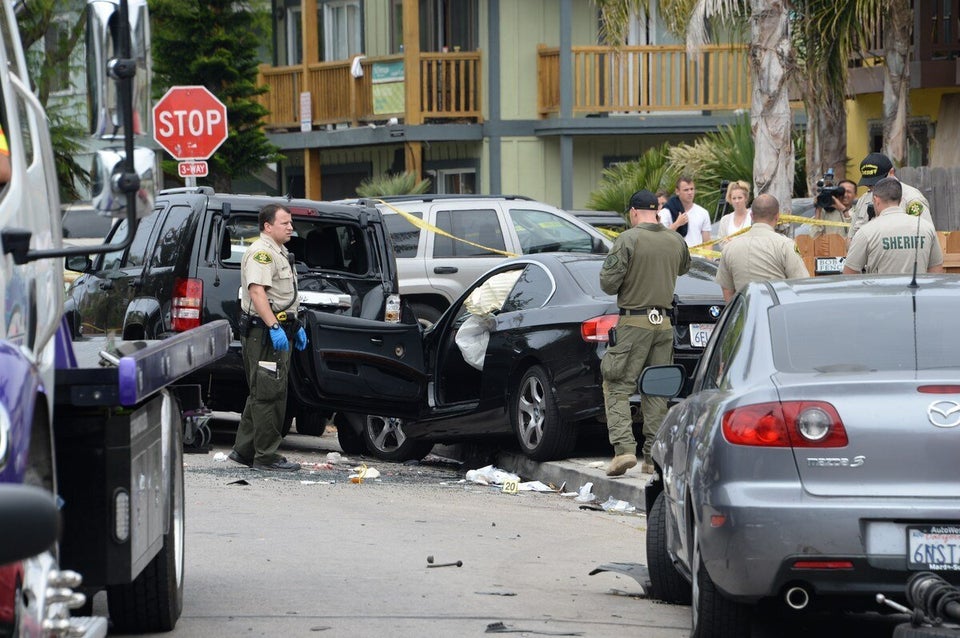Following any act of terrorism by a single individual, whether it involves bombings, shootings, or other form of violence, there are always questions that are asked afterward. These questions include whether the offender was acting alone or belonged to a larger group, whether mental illness was involved, or what could have driven someone to do such a terrible thing. Since many offenders are either killed by police or commit suicide to avoid capture, these questions often go unanswered.
While mental health professionals have argued for the existence of a "terrorist personality" or that people who belonged to larger terrorist organizations were either brainwashed or psychopaths, research looking at captured members of known terrorist groups has not shown this to be the case. Terrorist organizations typically recruit people who are intelligent and psychologically healthy since they can carry out tasks required of them and work in secret.
Though rare for people belonging to terrorist organizations, terrorists acting alone do appear to be more likely to suffer from mental illness. In one recent study comparing lone right-wing offenders to right-wing offenders belonging to larger organizations, the rate of mental illness was significantly higher among the lone offenders (40 percent vs 7.6 percent). Even for lone offenders who had not been formally diagnosed with mental illness, many still had a history of having been seen by mental health services prior to their offending.
Those lone offenders with a history of mental illness, the question of what sort of life issues may have triggered the violence is something researchers are only starting to investigate. In an intriguing new study published in the journal, Law and Human Behavior, two researchers at University College London examined data on 119 lone-acting terrorists who had been either convicted or killed while committing offenses in the United States and Europe since 1990. As a comparison, a sample of 119 group-terrorist offenders who had been part of a larger organization were also included in the study. The researchers, Paul Gill and Emily Corner of the University College's Department of Security and Crime Science, built up extensive profiles on each of the offenders, whether lone-acting or not, based on news stories, scholarly articles, and public records This included information on whether the offenders had ever been diagnosed with mental illness and the diagnosis they had been given.
As expected, lone-acting offenders were far more likely to have a history of mental illness than offenders who had been part of a group. Lone-actors with mental illness were also more likely to have a spouse or partner who was part of a larger movement (making them more vulnerable to outside influences) and to have parents who were divorced. Though offenders acting alone are often characterized as being "loners" without any real sources of emotional support, that doesn't appear to be the case. They are more likely to be in the process of experiencing (or being about to experience) a major life change, to have been a target of prejudice within a few months of the offense, to have recent financial problems, and to be under acute stress. Mentally ill offenders were also more likely to stockpile weapons and to use deadly force during their offense (including being more likely to kill their victims). They are also more likely to focus on single-issue ideologies which make them more careful in choosing their targets. Though some lone offenders may have a previous history of minor offending, most have no previous history of violence. Despite the mental illness diagnosis however, lone-acting offenders appear capable of rational planning and to act normally to avoid suspicion until the offense happens.
Among the diagnoses linked to potential violence are schizophrenia and mood disorders (usually depression). Although most people with these disorders are not a violent risk (and are more likely to be victims than offenders), it is no coincidence that news stories about "lone gunmen" often mention their previous involvement with mental health services and/or being on medication to treat mental health problems. Gill and Corner also point out that cases of offenders acting alone can vary widely in terms of what may have driven them to violence.
The most important finding reported by Gill and Corner is that lone-acting offenders may provide "clues" in their behaviour that can alert police and security agencies to what they are planning. They also suggest that mental health professionals need to be more aware of potential warning signs in their patients that might prevent future tragedy. There are already agencies in many countries such as the Fixated Threat Assessment Centre (FTAC) in the United Kingdom that have been established to identify high-risk individuals suffering from the kind of obsession that might lead to violence. FTAC was formed to provide special protection for the British Royal Family, members of the U.K. government, and other public figures who might be targeted. Along with identifying potential threats, FTAC also provides psychiatric services to defuse the threat where possible. Their duties often include monitoring social media for "manifestos" being published or other suggestions that some sort of violent incident is about to happen.
Though police and security agencies are usually not able to act until an actual criminal offense occurs, research studies such as the one by Paul Gill and Emily Corner can help these agencies make more informed decisions about how to intervene before it is too late. Whether or not they are able to act in time can often spell the difference between life and death.
MORE ON HUFFPOST:
